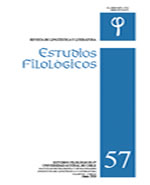History and uses of the adverb pronto
Main Article Content
Abstract
In this article we study the development of the uses of pronto, the Spanish adverb most frequently used to express temporal proximity. Nevertheless, this is a relatively recent use. Pronto was in its origin a learned word of limited use which was introduced at the end of the Middle Ages (evidence of it is the fact that the word is not included in the Covarrubias dictionary at the beginning of the 17th century). It was an adjective that had the meaning of 'ready, prompt, prepared'. It would later have adverbial uses, which no longer show disposition for action, but the fulfilment of the action in a short period of time. In the 18thcentury, pronto acquires its adverbial uses (the Diccionario de Autoridades still doesn't include its adverbial values). In the same period of time, there is also an obvious decline of the adjective uses. In the 19th century, the use of pronto increases in a considerable way, replacing presto, which was before the most common adverb for the expression of temporal proximity.

